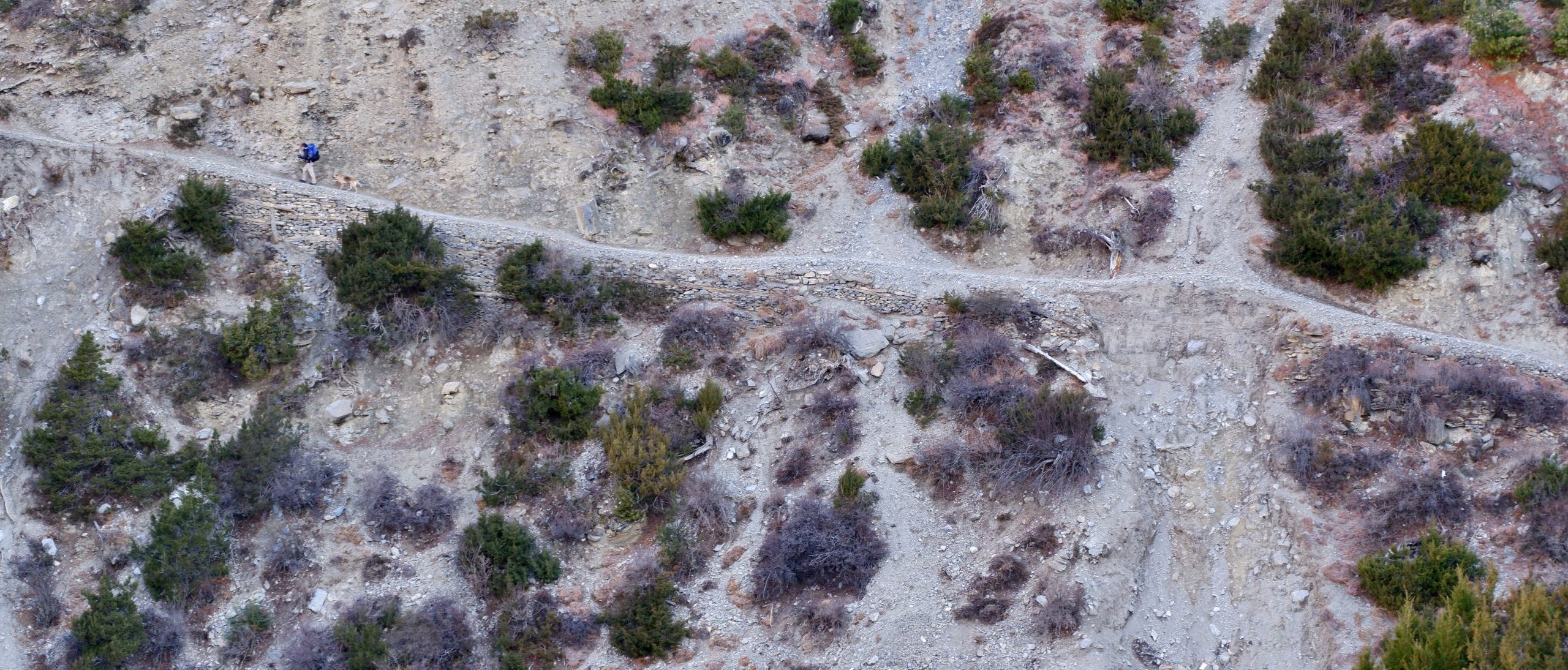NEPAL – TREKKING AND HIKING
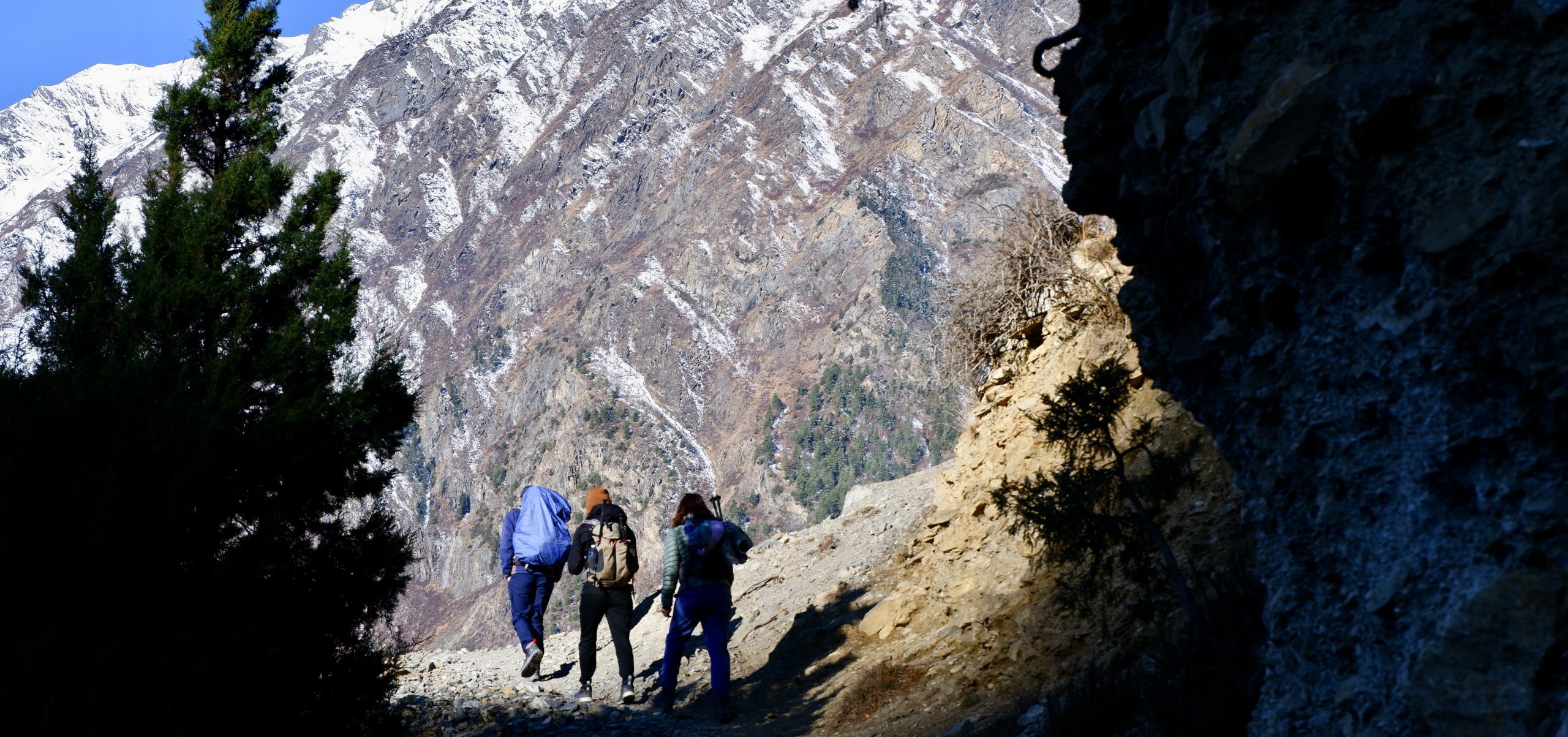
Most people travel to Nepal to go trekking. And even those who are mainly interested in culture will probably go on a hike or two. The Himalayan mountains are predestined for great tours in an impressive landscape. Despite development, there are still relatively few roads in Nepal, so the country is best travelled on foot. The trekking tours and possibilities are so numerous that we won’t list them here, but just mention a few key points. The internet is full of descriptions – if you find something and are interested or would like to hear our opinion, please feel free! Otherwise, we prefer to ask about your preferences, experiences, budget and ideas and then suggest trek/s.
Area
In principle, there are relatively clearly defined trekking areas that only partly merge into one another. The Khumbu/Everest region and the Annapurna region are at the top of the list. Here you can enjoy very close and impressive 8,000 metre peaks. Around the Annapurna region are the Dhaulagiri, Mustang and Manaslu areas. Often, large mountains such as Annapurna, Dhaulagiri and Manaslu are circled – or you will find trekking routes with different start/end points and sometimes you simply go to a destination and back again (in the latter case, with luck, in variations). Relatively close to Kathmandu is the Langtang region, which does not have any nearby 8,000 metre peaks, but offers a varied and impressive landscape. Towards the east, at the very end of Nepal, is the Kanchenjunga region, with the 8,000 metre peak in Sikkim/India. Further west of Dhaulagiri is the Dolpo and then the Rara National Park and the far north-western tip around Simikot, known as the “Far West Region“. And in between and around them you can also find one or two trekking routes. The areas have one thing in common: they are all fantastic and impressive. They differ in their accessibility, the possibilities, the frequency and the respective trails, differences in altitude etc. What is special about Nepal is that there are various tours/tour combinations where you can spend more than 20 days travelling.
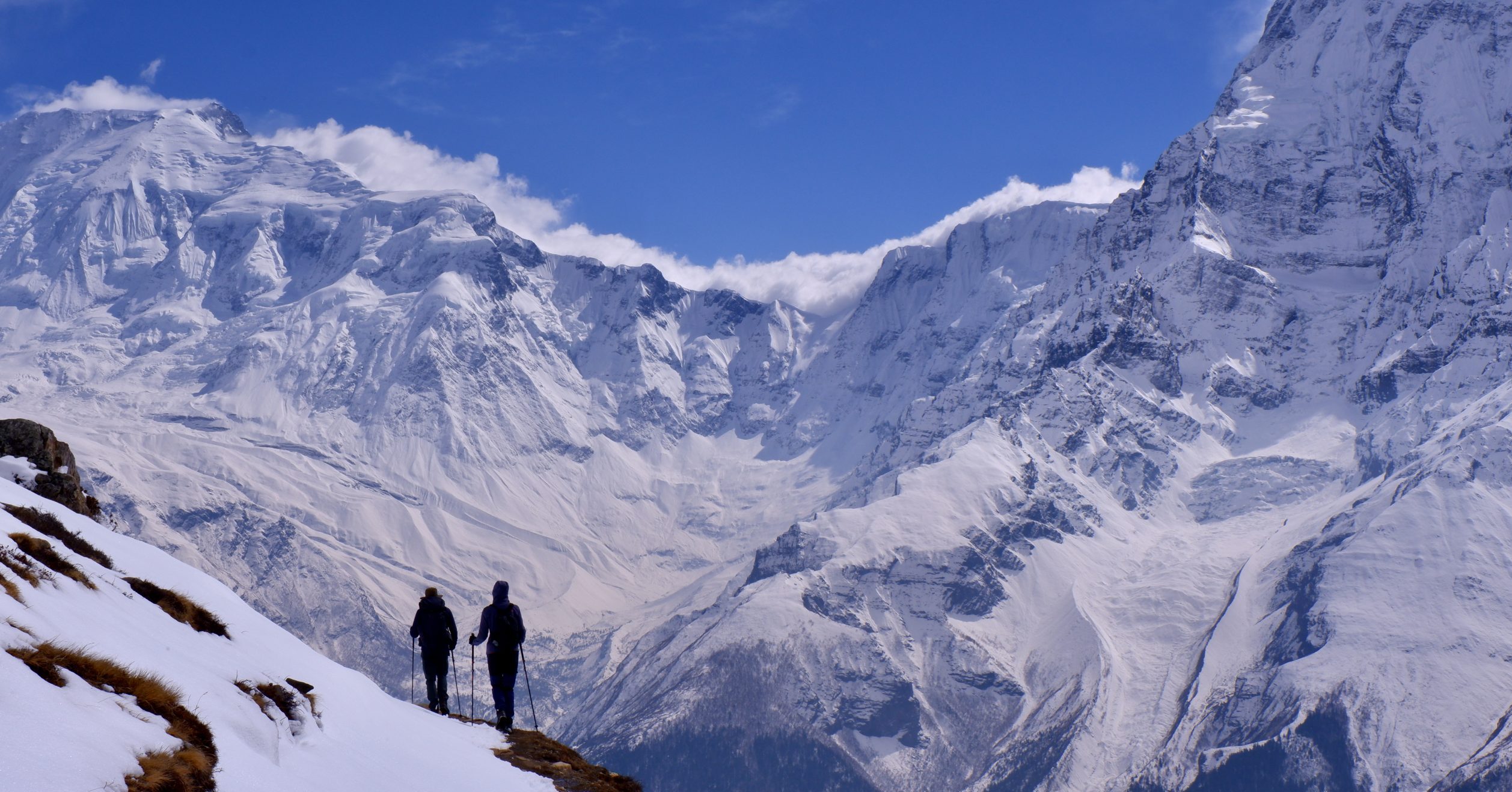
Lodge or Tent
Lodges are of course more comfortable: you sleep in a bed, sit and eat in the common room, sometimes have shower facilities and often have other trekkers to chat to. Nepalis are also really good at building or converting houses so that many lodge treks are possible. In some areas, however, this is not the case, as you have to take a tent, cook, food etc. with you. This mainly applies to the Dolpo region, the Dhaulagiri Circuit and the Far West region. However, there is constant change in Nepal and where you used to need a tent, there is now a lodge.
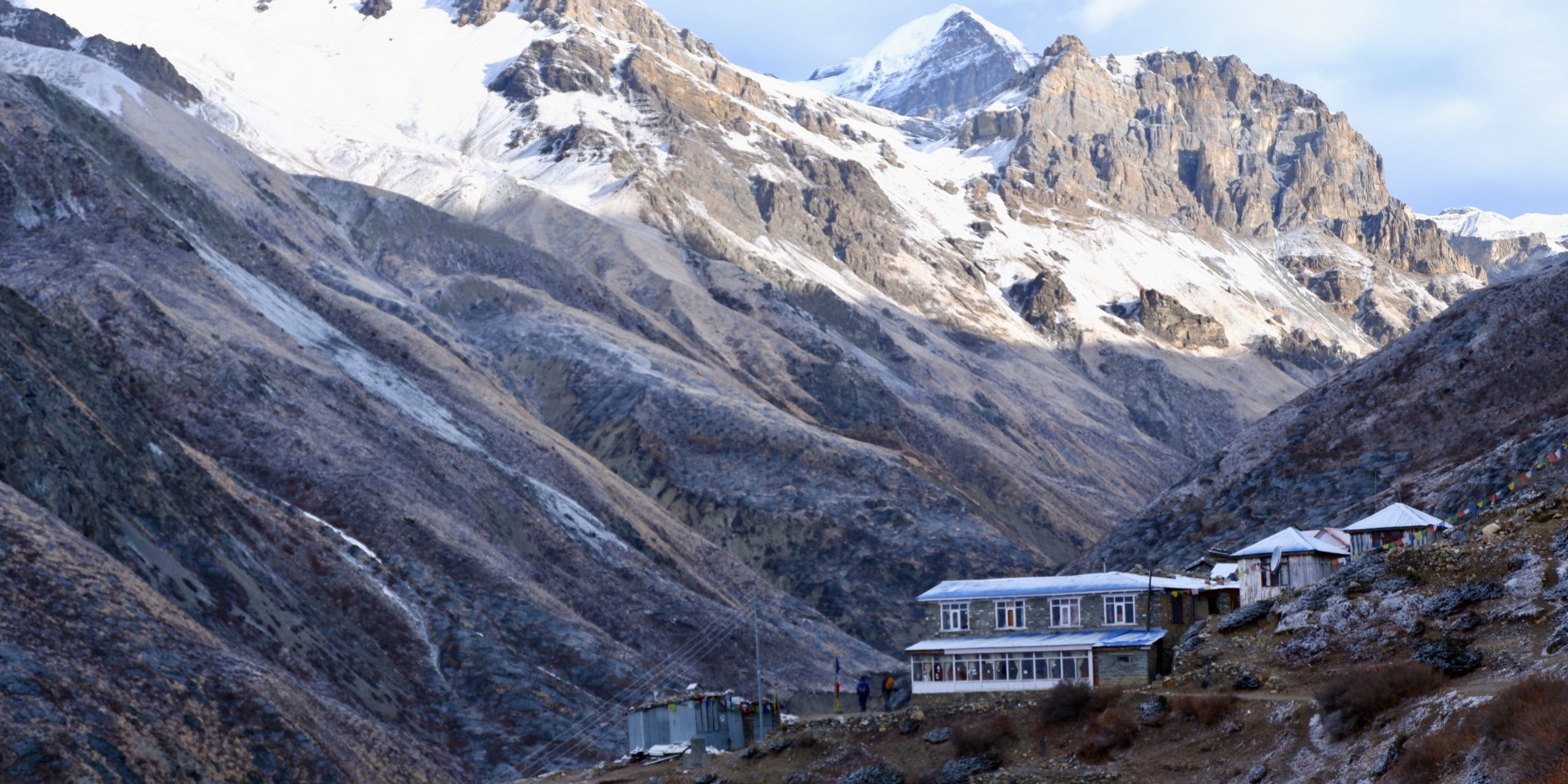
Guide, Porter, Porterguide and Horse
How do you find the way and who carries the luggage? There are several options, at least for lodge trekking. With tent trekking it depends a bit – horses are common, so it’s easier to carry more. But in some areas, porters are favoured for food, equipment and private luggage. You don’t actually need a lot of luggage for lodge trekking; on the popular trekking routes there are plenty of thick, comfortable blankets and you only need to take an inlet. It is possible to keep your luggage under 10 kg.
Of course, it is more comfortable if someone else carries it, as you can take more for comfort and still have the day pack. Porters usually carry and know the way, but don’t speak English and won’t help you with the organisation. However, you can communicate with them regarding departure, destination etc. You can book porters for an entire tour or just for certain parts, e.g. if you don’t feel super fit on certain days or to get over a high pass.
With regard to guides, it should be noted that there are always endeavours to make guides compulsory everywhere. This is already the case on some routes – especially in ecologically sensitive areas. However, we are in favour of a guide anyway, just in case, translations and interesting knowledge as well as pleasant local company
There are also porter guides in Nepal, i.e. they carry luggage (but not as heavy as the other porters), but can also speak English and fulfil the functions of a guide.
Guides have or should have training (ours definitely do), speak English (we’ll have to check for German) and are insured.
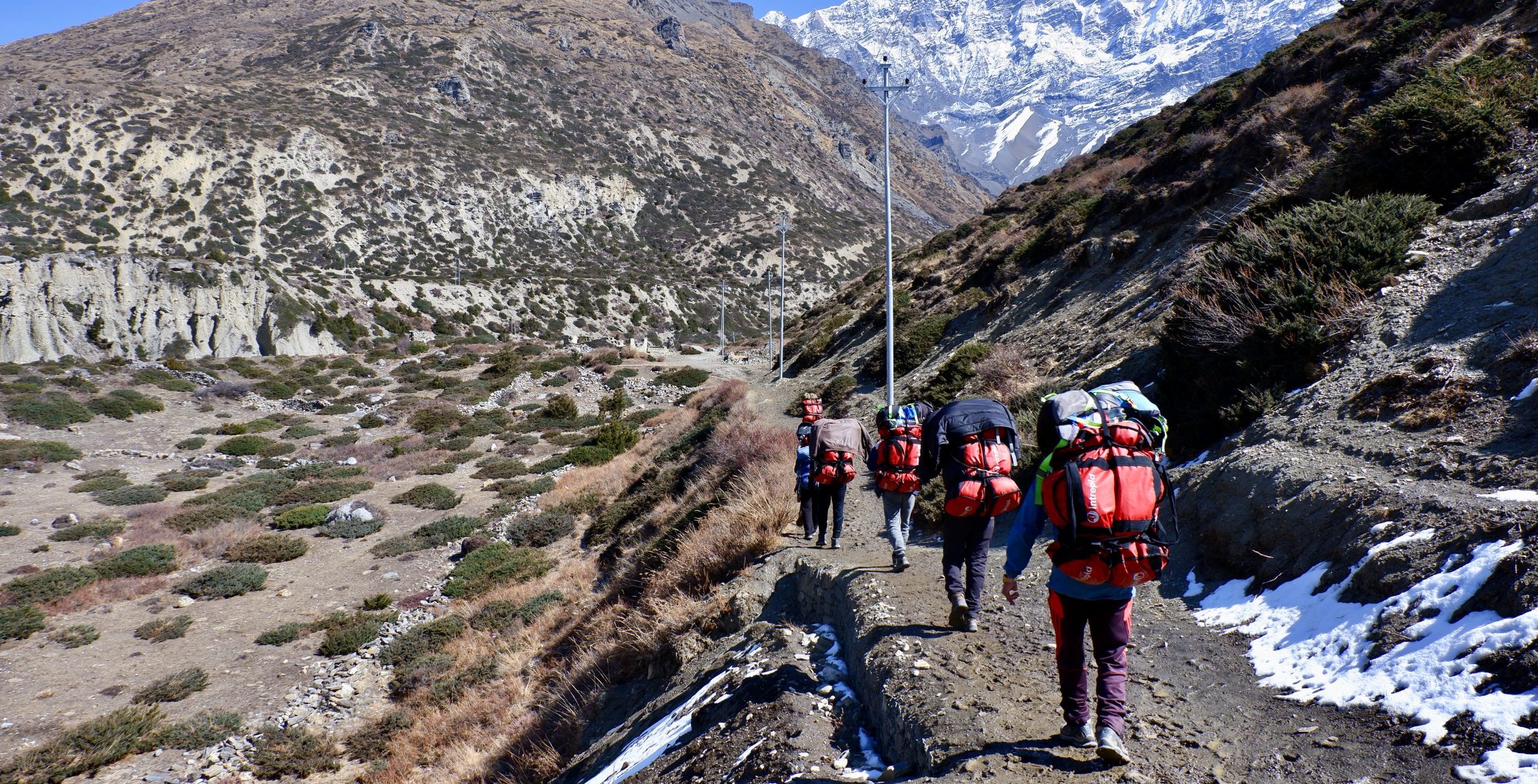
Difficulties and Ease
Difficulties lurk in the following areas:
- Height
- Fear of heights
- snow
- physical condition
- Costs
The good thing is: for all topics there are possibilities to find quasi easy alternatives! Here are our thoughts:
Height
Many people start to experience more severe altitude symptoms from around 3,500 metres. This varies from person to person but also within one person. Anyone who has had good or bad experiences at certain altitudes may find that the next time is different. In any case, care must be taken and slow acclimatisation is essential. At higher altitudes, making an additional ascent before sleeping is another small help. You can check your oxygen levels with a small, handy oximeter. Our guides have this with them and so you can react a little better to the measured values. Nepalese altitudes are therefore difficult for the body to cope with. If you are not comfortable with this, but still want to move around in the mountains, you can choose between several treks at lower altitudes.
Fear of Heights
People’s fear of heights varies greatly and can also be caused in different ways. Some people walk fearlessly along narrow paths on steep slopes, while their hearts sink on long suspension bridges. If you suffer from a fear of heights in certain circumstances, please describe it to us as precisely as possible so that we can better assess whether the tour you are interested in has any dangers in this respect. Fortunately, there is plenty of choice in Nepal in this respect too.
Snow
Snow is a challenge in many respects. Avalanches are a major danger. In areas where these are more likely, we pay particular attention to the weather situation. Snowstorms are also not to be underestimated and it is easier to get lost due to poor visibility. Unfortunately, weather forecasts are never 100% accurate and you have to rely on the experience of the locals. It can still happen that you are surprised by a snowstorm – but guides are trained to deal with it carefully. In winter, with a late thaw in spring and early snowfall in autumn, it is icy and slippery, so crampons (more for expeditions) or Grödel are a good idea for your luggage. You can avoid these difficulties by choosing the time of year, reserving days for snowfalls, having good equipment and experienced guides.
Physical Condition
The fitter you are, the easier a trekking tour will be. The only danger: ignoring your body’s warning signs about altitude. (Endurance) Sport activity before a trekking tour definitely helps. Some trekking tours definitely require a (very) good level of fitness. But even those who are not so fit don’t have to give up on their wish to trek, there are routes with shorter walking times and lower altitude differences.
Costs
Some treks are really expensive due to national park fees, expensive arrival/departure etc. Not everyone can afford that. But Nepal is big and the trekking possibilities are immense, so we will always be able to find a tour to suit your budget.
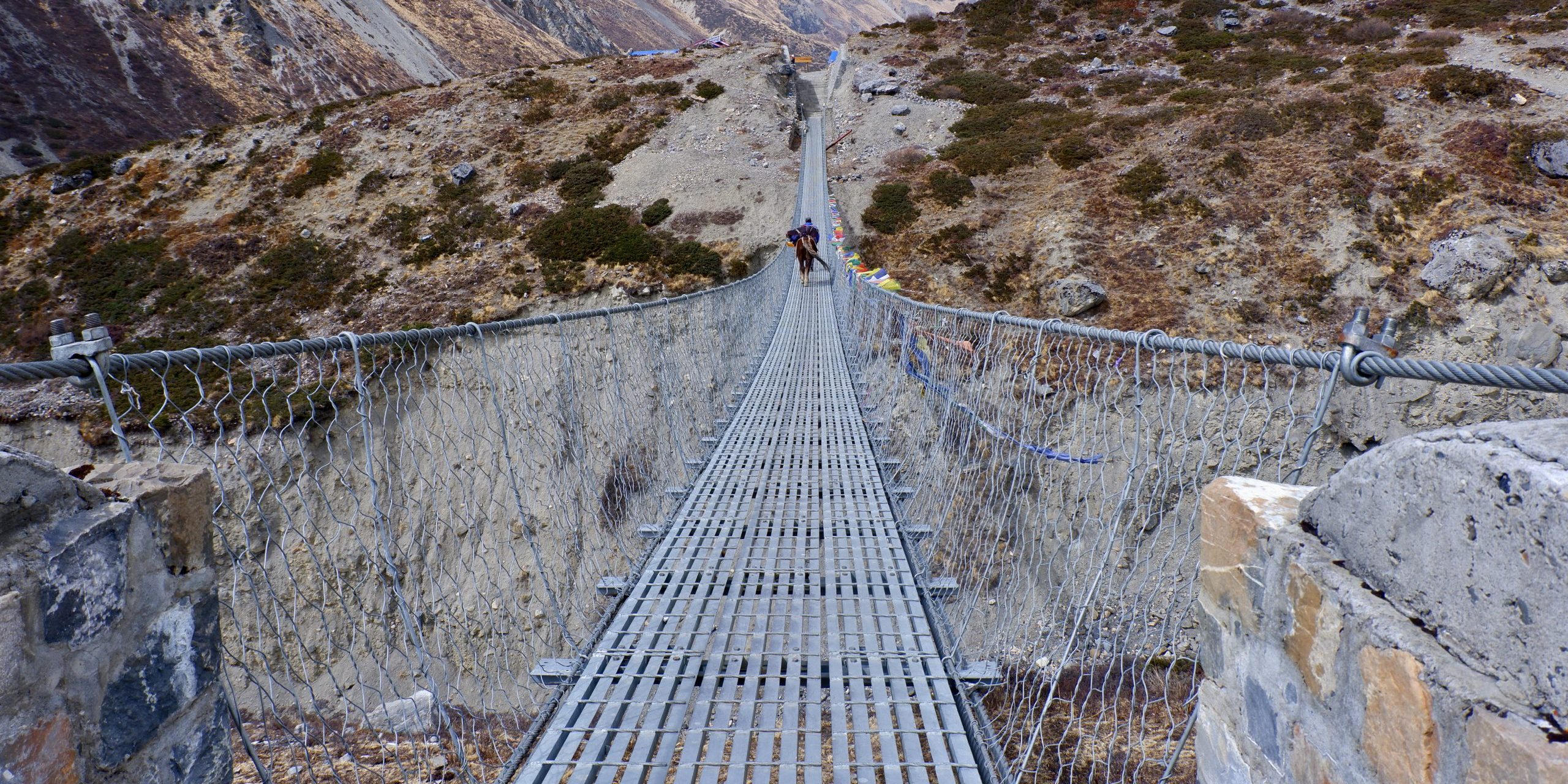
Day Hikes
If overnight stays on trekking tours are too much for you, but you still enjoy walking and hiking, there are various day tours available. Road construction has made it easier to get to trekking areas and undertake day hikes there. The area surrounding Kathmandu is also ideal for beautiful tours. During a trek, where the overnight accommodation is changed daily, it can also be quite nice to spend two or more nights in one place and go on day hikes from there. It is also possible to plan day hikes on car tours, e.g. to Mustang, where you are sometimes driven to the starting point and picked up again at the destination. All the villages are well suited for long walks anyway. We will be happy to advise you on the possibilities and how to put together an enjoyable tour plan.
